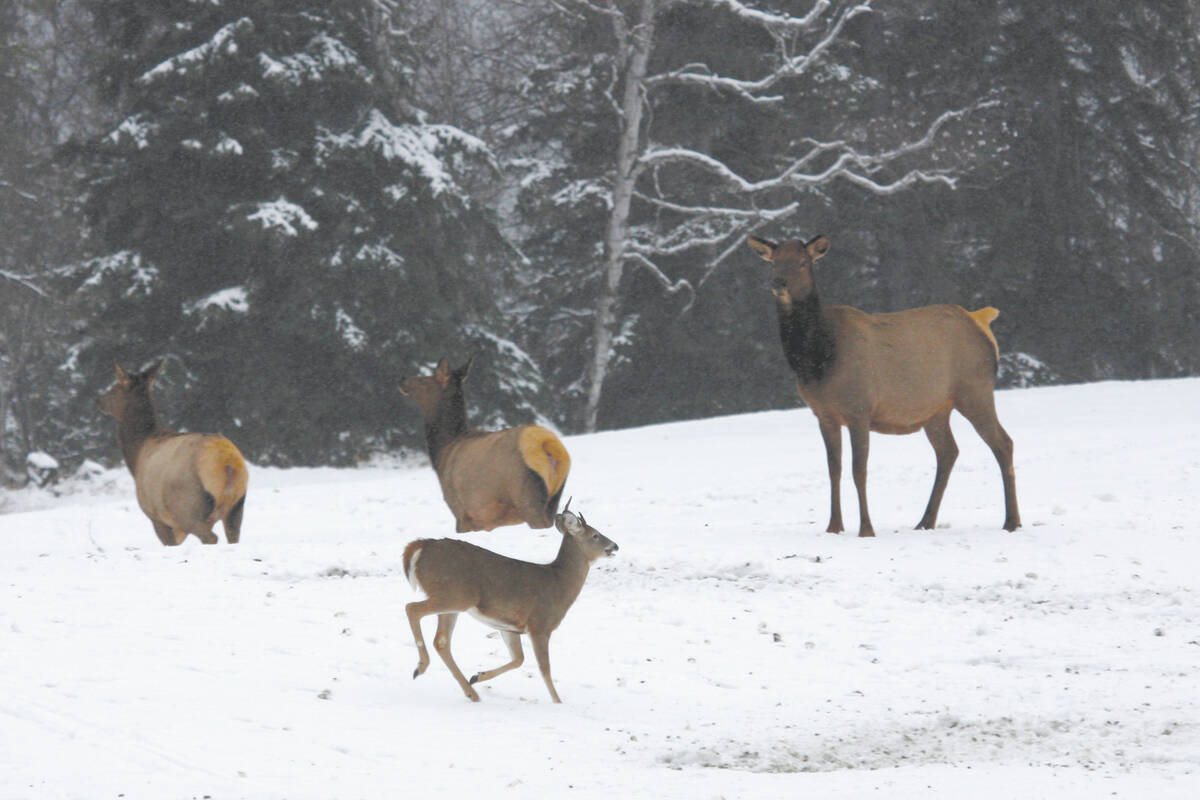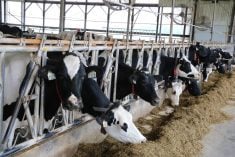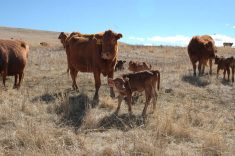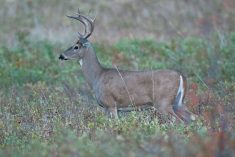Glacier FarmMedia – It’s not the comeback anyone hoped for.
After an almost two-decade absence, bovine tuberculosis made its return to Manitoba on a Pembina Valley dairy operation. The case was confirmed June 13 in samples taken at a slaughter facility June 9.
As well as being bad news in general for the cattle sector, the location of the case was an outlier compared to the historical geography of the disease.
Read Also
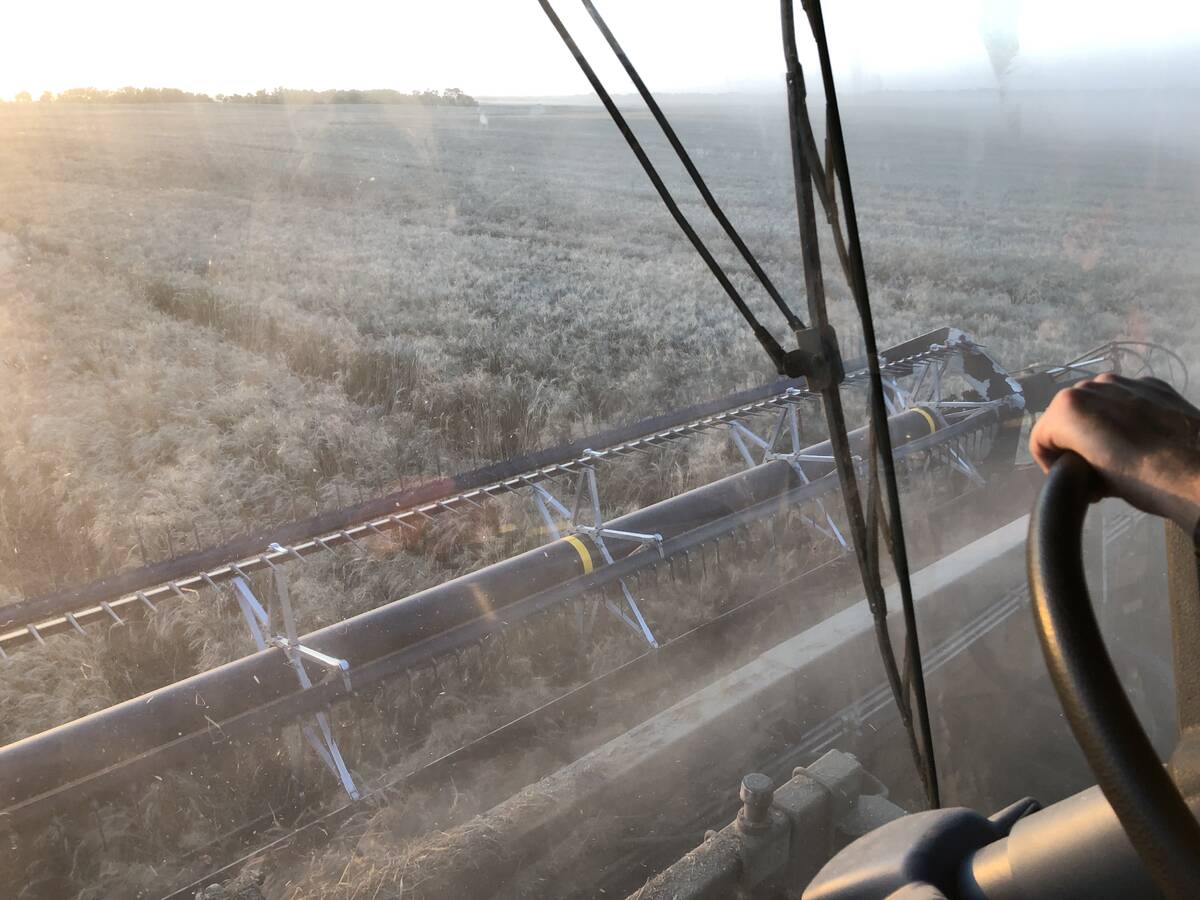
Mail strike disrupts grain sample delivery
The Canadian Grain Commission has asked farmers to consider delivering harvest samples directly to CGC offices, services centres or approved drop offs as Canada Post strike delays mail.
Efforts against bovine tuberculosis typically put a bullseye around Riding Mountain National Park in the province’s west. That was the nucleus of several outbreaks in the 1950s and 1960s. When tuberculosis cases heated up again in the 1990s and early 2000s, almost all cattle cases were either in the park’s region or linked to herds in the region.
The last cattle case prior to 2025, confirmed in 2008, was within 10 kilometres of the park.
The region was set apart from the rest of the province in 2003. Producers and hunters in the Riding Mountain Eradication Area (RMEA) faced more stringent rules around testing and animal movement until 2019, when, following years without infection in either cattle or wildlife, requirements were lifted.
The last case in the Pembina Valley was near Manitou in 1996, and was the sole case not linked to Riding Mountain National Park, according to a provincially published timeline of the disease in Manitoba.
Wildlife are considered a major hiding place for the disease, particularly elk. Wildlife testing before the eradication area was established sampled thousands of elk, white-tailed deer and moose, although elk samples outnumbered the other species. Compared to one infected white-tailed deer, there were 11 infected elk found from 1998-2001.
The Pembina Valley, though, doesn’t have many elk.
“We’re predominantly a grainland type area, so we don’t see elk herds like people do in other parts of the province or Canada,” said Andre Steppler, a purebred beef cattle producer in the Pembina Valley.
Elk are on the rise in Manitoba, he said, but he was skeptical about those particular ungulates being at fault.
The Pembina Valley does, however, have a healthy population of deer.
Tunnel vision on elk
There is no official word yet on where the dairy cow might have contracted bovine TB.
However, Ryan Brook, a professor and graduate chair with the University of Saskatchewan’s department of animal and poultry science, stressed that other potential bovine TB vectors, such as white-tails and wild pigs, should not be forgotten during Manitoba’s latest brush with the disease.
Brook did his doctoral work in the Riding Mountain Eradication Area. Part of that was a survey asking farmers about the wildlife they were seeing on their properties.
“Essentially, every single farm had seen white-tails,” he says.
Manitoba claims many more white-tailed deer, and in many more areas, than elk. That spread makes them a concern when it comes to disease spread.
“Whereas elk, they’re separated into fairly unique populations at Riding Mountain and Spruce Woods and then up at the Duck Mountains,” Brook said.
Wild pigs, meanwhile, are often cited as a potential disease risk for the pork sector. They can also spread bovine TB, Brook said, and “very well may be another important wild card on this that I haven’t heard anybody talk about so far.”
After all, while Manitoba’s wild pig problem is getting lots of recent press, they were far lower on the invasive species radar the last time Manitoba bovine TB was in the headlines.
Protecting against wild TB
Whatever the vector, Brook had some tips on how Manitoba’s cattle producers can keep wildlife away from feed and avoid nose-to-nose contact with cattle, thus limiting the risk of disease spread.
Extended grazing is often pitched as a financial win to farmers, but producers may need to adjust their approach to feeding practices such as swath grazing, bale grazing and bale shredding.
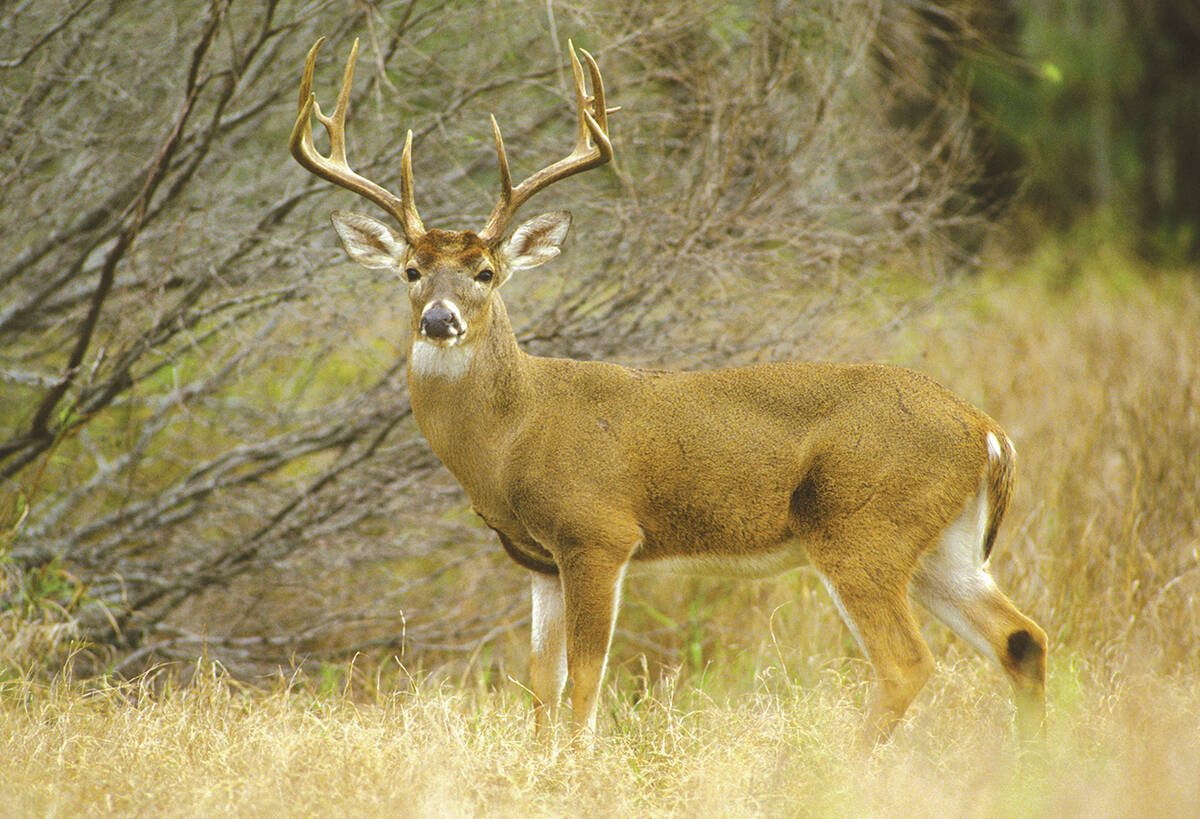
“If your focus was solely on livestock production, bale grazing makes all the sense in the world. But if you’re also thinking about avoiding disease, then it becomes problematic,” Brook said.
Farmers don’t necessarily have to throw those feeding practices away, he said, but they may need to rethink how, where and when they’re used.
“Maybe there’s one month or two months that we see deer on our farm the most, then we can do some specific modifications to address that higher-risk time period,” he said.
“Maybe you have to pick your spots where you’re doing it. Maybe it’s closer to home. Also, maybe that has to be done in a more well-developed fenced area — not just three strands of barbed wire or a couple of strands of electric fence to keep the cattle in, but a better fencing system to keep the deer out as well.”
Brook has developed an on-farm, in-person assessment to help livestock producers identify wildlife risk. He walks them through a range of questions, including how often they see elk, wolves and deer, as well as their feeding practices and livestock distribution. The farm is then scored on its overall vulnerability to wildlife-spread disease.
“If you’re in the one or two percentile, you’re doing a lot of things well and you’re in a low-risk area and there’s probably not a whole lot (more) you can do,” he said.
“But if you score a 90 or 95, there’s certainly a number of things you can do.”
Producers interested in the assessment can email him at ryan.brook@usask.ca.
Hay yard barriers
A barrier fence can keep wildlife from eating and damaging valuable hay. According to Brook, an effective fence comprises 14-foot posts, pounded four feet into the ground with heavy duty page wire on the outside, a couple of strips of high-visibility game or barbed wire on the top and “good strong gates.”
He’s seen those fences work, he said. In one case, fence was installed around hayland that elk had been a problem on for decades.
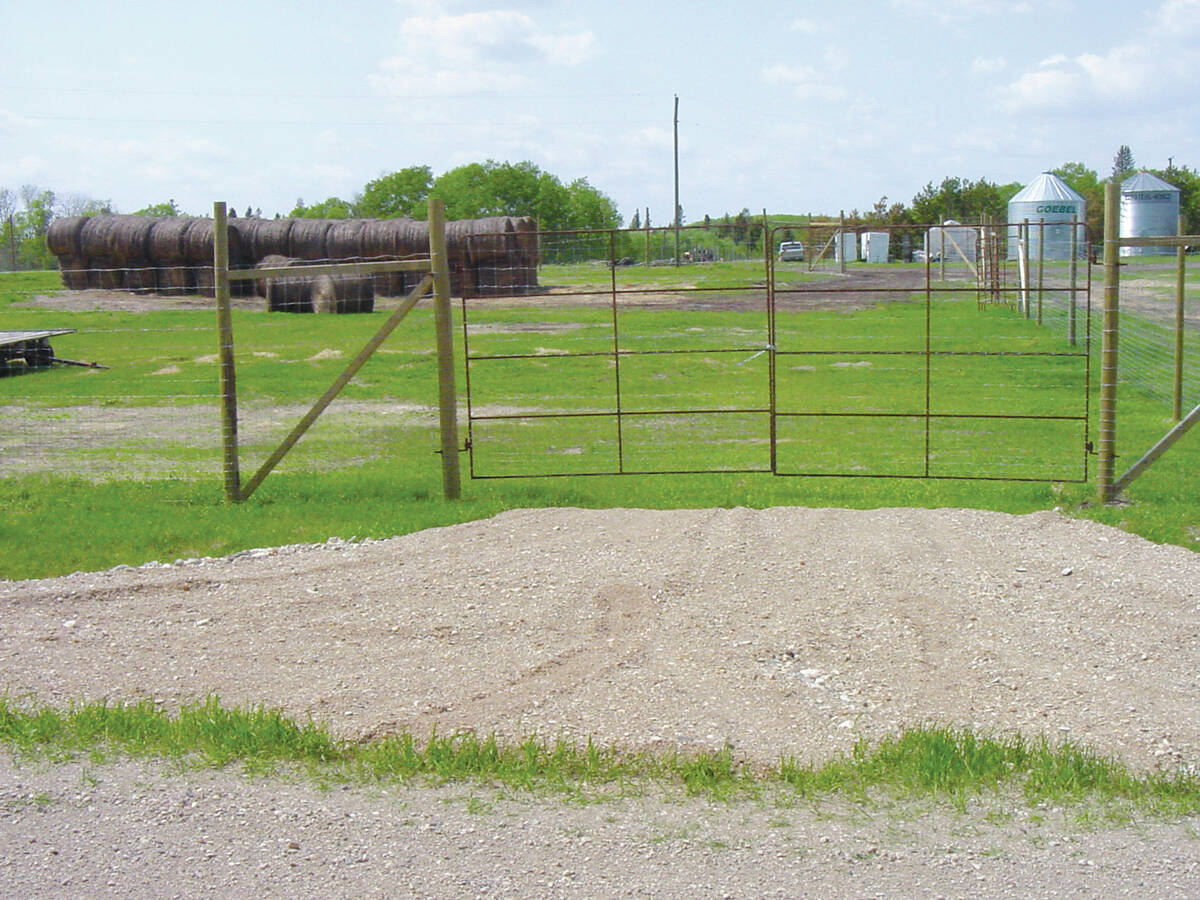
“They wandered around the fence twice and realized they couldn’t get in, left and (the producer) hasn’t seen them in three years,” he said.
Those kinds of fences are expensive, though. Brook puts the typical price tag around $6,000.
He maintains, however, that they pay for themselves in saved feed. He pointed to crop insurance data on wildlife hay damage payouts.
“(If) a barrier fence costs $6,000 and this person has been written (insurance) cheques for $55,000 over the last 10 years, then the math becomes pretty clear that not only is it a smart disease prevention strategy but it’s going to pay for itself in eliminating hay bale damage as well,” he said.
Then, he added, there’s the potential loss and heartbreak if infection does get onto a farm. In the case of something such as bovine TB, that means herd depopulation and potential wider quarantines affecting other farms.
“Farmers will tell you — and they’ve said point blank to me — that the day those trucks showed up to take their cattle was the worst day of their life, or very nearly so,” Brook said.
Go 3D
Defined in a 2015 Alberta Farmer Express article as a type of fence that uses “different heights, widths and depths to make it harder for wildlife to navigate and jump,” three dimensional fences are another tool for keeping wildlife away from livestock feed.
That article quotes Spirit River, Alta., producer Lawrence Andruchiw, who turned to 3D fences to keep elk and deer off his property.
“It’s a single wire three feet out and three feet high on either side of your other fence,” he said.
The wider footprint takes advantage of wildlife’s poor depth perception.
“When game jumps the fence, they hit that wire because they can’t judge where the wire is,” Andruchiw said.
Brook also recommends 3D fences.
“(Deer) can’t jump over it … if you have enough height and width,” he said.
The above suggestions are long-term solutions, Brook noted.
Be cautious with intervention feeding
Some farmers may also be tempted by fixes such as intervention feeding — putting out hay bales around the farm periphery to placate wildlife.
He doesn’t encourage that practice. It may keep the deer on the edge of the farm, particularly in the first year, he said, but they will likely come back in higher numbers the next year, expecting to be fed.
“At best, it’s a short-term solution and, at worst, it will make the problem worse,” he said.
“Any time you’re providing feed to animals that’s concentrated like that, you’re going to seriously increase the risk of TB spreading.”
Over the past few decades, a growing number of farmers have taken to using plastic grain bags for temporary crop storage. Those are like catnip to wild pigs, deer and elk, Brook warned.
“The snow builds up and deer and wild pigs or elk will walk over them and their hooves go through the plastic and all of a sudden there’s half a million calories falling out of a bag in the middle of winter when they need it most,” he said.
Wild pigs are particularly notorious for getting into grain bags and feeding extensively.
Beyond the financial loss of feed, every grain bag hole is a potential contamination bridge between wildlife and the herd.
“It would not be unheard of to see a site like that that has elk, deer and pigs all feeding at the same time and then that grain being used to feed cattle,” the researcher said.
Matthew Atkinson, president of Manitoba Beef Producers, emphasized the importance of the government’s role in helping manage bovine TB as well as the need for producers to keep on-farm records.
“(We) always work on trying to have programs available to those affected producers to offset some of the costs of having to build an enclosure around feed or something like that,” he said.
“That is always something we do a lot of advocating for because that’s good management practice.”




